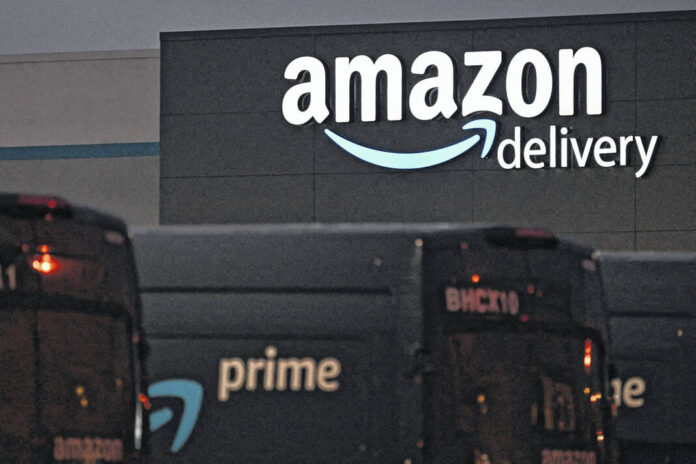SEATTLE — Amazon marked its largest sales day ever Tuesday, the start of a 48-hour Prime Day sales event that saw shoppers spend billions to buy more than 375 million items, the tech and e-commerce giant said Thursday after the end of the sale.
Online spending in the U.S. over the 48 hours of Prime Day clocked in at $12.7 billion, up 6.1% from the same event last year and setting a record for Prime Day, according to data from Adobe Analytics.
The average order size was $54, up from $52 during Prime Day 2022, according to data and tech company Numerator. This year, 65% of households shopping Prime Day placed two or more orders, bringing the average household spend to $155.
Amazon’s Fire TV Stick with Alexa voice remote was the top seller across the site worldwide, Amazon said. Customers also reached for lip balm, AirPods and a portable carpet cleaner. Numerator, in its own analysis, added Temptations cat treats and Liquid I.V. packets to the list of bestsellers.
“When we started Prime Day, it was very simple, we wanted to have a celebration of our members,” said Jamil Ghani, the vice president of Amazon Prime. “Over the years … we just keep on making the event bigger and bigger for our members. You see that in the results.”
Amazon’s 2023 Prime Day surpassed its results from 2022. Savings increased from $1.7 billion to $2.5 billion. The total number of purchases rose from 300 million to 375 million items.
Tuesday, the first day of the sale, marked the largest sales day in Amazon’s history, the company said.
This year’s event also recorded the largest number of Prime membership sign-ups of any previous Prime Day, Ghani said. He declined to share how many people signed up for the service.
This year, Amazon included new features like a filter to search only for products from small businesses or the option to request an invitation to purchase popular products that Amazon thought could sell out. Amazon also offered Buy With Prime, a way for customers to shop using Amazon Prime on third-party sites.
Last year, Amazon added a second sales event in October, dubbed Prime Early Access, in part to kick-start the holiday season.
Numerator’s analysis found shoppers this year favored lower-priced items. The average spend per item was $32, with 57% of items purchased marked under $20 and just 5% going for more than $100.
About 6.5% of orders were purchased through Buy Now Pay Later, which allows customers to pay for purchases over several installments, according to data from Adobe Analytics. Those sales drove $927 million in revenue, up 20% from the same event last year.
“For months, consumers have felt the effects of persistent inflation and an uncertain economic environment, and it has pushed shoppers to embrace more flexible ways to manage their spending,” said Vivek Pandya, lead analyst with Adobe Digital Insights. The revenue growth from Buy Now Pay Later “is a preview of what we can expect in the months ahead.”
The annual Prime Day sales event is only available to shoppers who subscribe to Amazon Prime. Amazon raised the price of a Prime membership in 2022 — from $12.99 to $14.99 per month — to offset rising expenses related to transportation and wages. Since then, it has worked to entice customers with more benefits for the subscription, from the expansion of one-day shipping to Thursday Night football.
In the first three months of 2023, Amazon reported it made $9.6 billion from subscriptions including Prime and other digital and audiobooks. That was a 17% jump from the same period last year.
According to Numerator, 88% of Prime Day shoppers were already members of the subscription service.
Ghani said Amazon will “take lessons” from this year’s Prime Day and turn its attention toward the rest of the year, with a focus on back-to-school shopping and then the holiday gift-giving season. The company will also focus on those new members who signed for a Prime subscription and aim to “have them stick around.”
Prime “represents the best of Amazon and best of Amazon’s leadership principles,” Ghani said. “We look forward to doing that in the future as well.”







